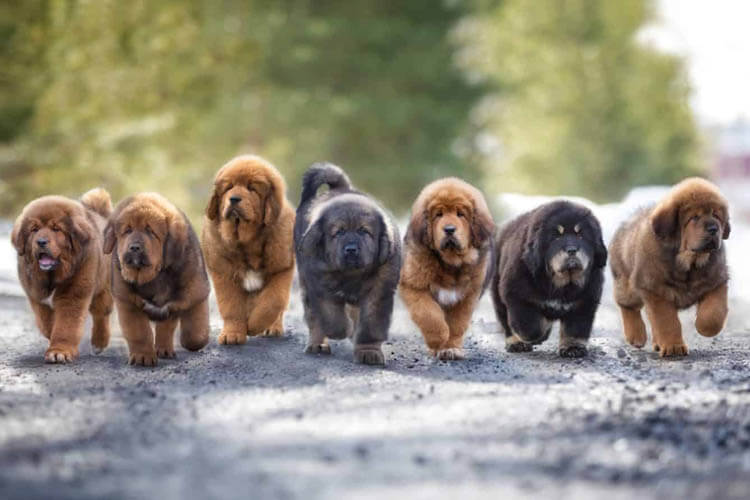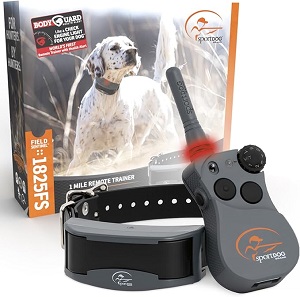
Mastiffs
Mastiffs are a group of large, powerful dog breeds known for their impressive size, strength, and gentle disposition. Often referred to as gentle giants, Mastiffs are protective, loyal, and affectionate companions. Below is a comprehensive overview of the Mastiff breed, including their characteristics, history, and care needs.
Physical Appearance:
- Size: Mastiffs are among the largest dog breeds. Adult males typically weigh between 160 to 230 pounds (73 to 104 kg), while females weigh between 120 to 170 pounds (54 to 77 kg). Height can range from 26 to 34 inches (66 to 86 cm) at the shoulder.
- Build: They have a massive, muscular build with a broad head and thick neck. Their bodies are stocky, strong, and well-proportioned.
- Coat: Mastiffs have a short, dense coat that can be smooth or slightly coarse. The coat is typically easy to maintain, requiring minimal grooming.
- Colors: Common colors include fawn, brindle, and apricot, with various shades of each. The face may have a dark mask.
- Face and Ears: Mastiffs have a large, broad head with a prominent stop. Their ears are small and hanging, set high on the head.
- Tail: They have a thick, tapering tail that is usually carried low.
Temperament and Personality:
- Gentle and Affectionate: Mastiffs are known for their gentle demeanor. They are usually calm and affectionate, making them excellent family companions.
- Loyal and Protective: Mastiffs are very loyal to their families and can be protective of their home and loved ones. They tend to be good guardians due to their size and strength, often acting as a deterrent to potential intruders.
- Calm and Steady: Despite their imposing size, Mastiffs typically have a calm and steady temperament. They are often laid-back and enjoy lounging around the house.
- Good with Children: Mastiffs are usually very patient and gentle with children, making them great family pets. They can be playful and enjoy spending time with kids.
- Social and Friendly: While they may be cautious with strangers, Mastiffs are generally friendly and sociable. Early socialization is important to ensure they are well-adjusted and comfortable in different environments.
Exercise and Activity Needs:
- Moderate Exercise: While Mastiffs are large and strong, they do not require excessive exercise. A few short walks and play sessions each day are usually sufficient to meet their needs.
- Avoiding Strenuous Activity: Due to their size, Mastiffs are prone to joint problems, so high-impact exercises (like running or jumping) should be avoided, especially in puppies and young dogs.
- Mental Stimulation: Mastiffs benefit from mental stimulation, such as training games or interactive toys, to keep them engaged and prevent boredom.
- Indoor Companions: Mastiffs tend to be more content indoors than outdoors. They thrive on companionship and prefer to be close to their families.
Training and Socialization:
Essentials for Your Newly Adopted Pet
Welcoming a shelter pet into your life is a beautiful journey. Here are some handpicked items to help your new friend feel safe, loved, and right at home:
- Training Needs: Mastiffs are intelligent but can be somewhat stubborn. Consistent, positive reinforcement training methods work best for this breed.
- Socialization: Early socialization is crucial for Mastiffs to ensure they grow up to be well-rounded adults. Exposing them to various people, environments, and other animals will help prevent shyness or aggressive behavior.
- Obedience Training: Basic obedience training is essential for Mastiffs, as their size means they can be difficult to manage if they do not have proper training.
- Patience and Consistency: Training should be approached with patience and consistency. Mastiffs respond well to a calm, authoritative trainer who can establish boundaries and rules.
Health and Lifespan:
- Lifespan: Mastiffs typically have a lifespan of 6 to 12 years. Larger breeds often have shorter lifespans due to health issues.
-
Common Health Issues:
- Hip and Elbow Dysplasia: A common genetic condition where the joints do not develop properly, leading to arthritis and mobility issues.
- Bloat (Gastric Dilatation Volvulus): A life-threatening condition where the stomach fills with gas and twists, requiring immediate veterinary attention.
- Heart Issues: Mastiffs are prone to certain heart conditions, such as dilated cardiomyopathy.
- Joint Problems: Due to their size and weight, Mastiffs may experience joint issues, including arthritis, as they age.
- Skin Problems: Some Mastiffs may develop skin issues, including allergies or infections, particularly in the folds of their skin.
- Routine Veterinary Care: Regular check-ups with a veterinarian can help monitor for common health issues and ensure early detection and treatment.
Grooming Needs:
- Low Maintenance: Mastiffs have a relatively low grooming requirement due to their short coat. Regular brushing (weekly) can help minimize shedding and keep their coat healthy.
- Bathing: They do not require frequent baths unless they get particularly dirty. Regular baths every few months are usually sufficient.
- Ear Care: Regular ear checks are important to prevent infections, especially in the folds of their ears.
- Nail Trimming: Regular nail trimming is necessary to prevent overgrowth and discomfort.
- Dental Care: Like all dogs, Mastiffs benefit from regular dental care, including brushing their teeth to prevent dental problems.
Living Conditions:
- Indoor Dogs: Mastiffs thrive in indoor environments where they can be close to their families. They do not do well if left outside for long periods.
- Space Requirements: While they can adapt to apartment living, having a larger home with a yard is ideal for this breed due to their size.
- Temperature Sensitivity: Mastiffs can be sensitive to extreme temperatures, particularly heat. They should have access to shade and water during hot weather.
Mastiffs as Family Dogs:
- Great Family Companions: Mastiffs are known for their loving and gentle nature, making them excellent family pets. They are protective of their loved ones and can be very loyal.
- Good with Children: They are typically very good with children, often forming strong bonds with them. However, supervision is advised, especially with younger children, due to their size.
- Compatibility with Other Pets: Mastiffs can coexist with other pets, especially if socialized from a young age. Early introductions and supervised interactions are important for a harmonious household.
Working Roles for Mastiff Dogs:
- Guard Dogs: Mastiffs are often used as guard dogs due to their protective nature and imposing size. They can be effective deterrents against intruders.
- Family Protection: Many families choose Mastiffs for their ability to protect the home while being loving companions.
- Therapy Dogs: Some Mastiffs are trained as therapy dogs, providing comfort and support to individuals in hospitals or nursing homes due to their calm demeanor.
History of the Mastiff:
- Ancient Origins: The Mastiff is one of the oldest dog breeds, with a history that dates back thousands of years. They are believed to have originated from ancient breeds used for guarding, hunting, and warfare.
- Historical Roles: Throughout history, Mastiffs have been used as war dogs, hunting dogs, and guard dogs. They have been associated with nobility and were often depicted in art and literature.
- Recognition: The Mastiff breed is recognized by major kennel clubs, including the American Kennel Club (AKC) and the United Kennel Club (UKC).
Summary:
Mastiffs are large, gentle giants known for their protective nature, loyalty, and affectionate demeanor. They make excellent family companions and are particularly good with children. While they do not require excessive exercise, they thrive on companionship and indoor living. With proper training, socialization, and care, Mastiffs can be wonderful family pets that provide love and protection for many years.
Affiliate Products
Up to 75% Discount

Dog Collar with Health Monitoring
BUY NOW »
Up to 55% Discount

Luxury Faux Furhuge Napping Bed
BUY NOW »

